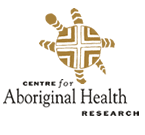In week 10 out reading about Inuit elders really got me thinking about their role in native communities. Many cultures embrace their elders as a source of wisdom but I am aware of few groups that elevate them to a status equivalent to first nations groups.
The website http://www.niichro.com/Elders/Elders7.html shares some great information about Native American Elders, Leaders, Seniors and the demographics behind Native communities. The website is focused on a cross-cultural look at diversity and aging and I must say there is some great information and insight here.
The site is a joint project between the National Indian and Inuit Community Health Representatives Organization (NIICHRO) and the Canadian Ethnocultural Council (CEC) and is focused on addressing issues for elders in first nations communities.
Here are some of the concepts that the site focuses on and their links:
- Different Histories, Some Common Issues
- Seniors and Elders
- Some Demographic Trends
- Elders at Risk
- The Normal Process of Ageing
- Essential Elements of Ageing Well
- Barriers to Ageing Well: The Problem of Unwanted Isolation
- A Wholistic Approach to Unwanted Isolation
Check out the site for more information and some insight into issues facing Aboriginal elders.
 The
The